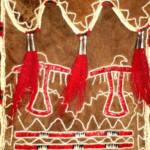Brown recluse spiders are mostly found in the warmer regions of the world, such as central and southern parts of the United States, Central America, North and West Africa, Mediterranean countries, South American countries, and the Caribbean islands. A few brown recluses have been found in colder climates; it is believed that the spider “hitched” a ride to the colder places. A Few brown recluses have been found in Ohio, Indiana, Iowa, and Nebraska.
These arachnids belong to the genus “Loxosceles”, which comes under the family “Sicariidae”. There are about 100 species under this genus. In other words, there are 100 or more types of recluse spiders. Different regions of the world have different types of recluse spiders such as the Chilean recluse, which is native of Chile, though it is now found in other parts of the world as well.
What makes these spiders so important is the fact that they are venomous. The venom from brown recluse spiders is considered to be more lethal than that from rattlesnakes. Luckily, the quantum of venom that the spider injects is quite low, because of which deaths are rare. That does not mean they are to be taken lightly. Brown recluse spider bites have caused deaths in past, though only of children under seven years of age.
These spiders have characteristically long, wiry legs with four joints on each leg. The first joint of each leg links it to the central cephalothoracic region. The legs are attached symmetrically forming pairs such that four legs are on right side of the cephalothorax, and other four are on the left side.
The spider’s joints are designed so that the legs can fold upwards to reduce the place needed to move. The cephalothorax is mostly brown in color. There are dark brown marks on this region resembling the violin markings. Because of this, recluse spiders are also referred to as violin spiders, or fiddle spiders.
The venom of recluse spiders is necrotic; it kills the healthy skin tissue, and soon after the area forms a blister. The blister soon becomes a lesion that gets progressively worse. An advanced necrosis (tissue death) caused by the brown recluse spider bite is extensive.
Histological damage caused by the brown recluse spider
The venom of the brown recluse destroys red blood corpuscles, and platelets, which stops the blood clotting in the region where the spider has bitten. The necrosis can be so extensive that tissue death can continue to expand deeper and beyond the bite in all directions. It takes a long time for a recluse spider bite to heal. The dead tissue will have to be removed before healing can take place. Besides necrosis, these lesions can get infected, leading to even more complications. The severity of the wound caused by the brown recluse depends on how much, if any, venom was injected at the time of the bite. The brown recluse is not aggressive toward humans, but will bite if it feels threatened. This spider doesn’t always inject venom. If the brown recluse does inject venom, the toxins will soon show their effects. The venom has been known to find its way into the blood stream; when brown recluse venom reaches the blood stream, renal failure, coma and death could result.
A major hurdle in treating recluse spider bites is diagnosing them. The lesions from these bites resemble other skin lesions such as those from some bacterial or fungal infections. Unless you know you were bitten, you might not even recognize the wound as a spider bite. The wound from a recluse spider bite could be misdiagnosed as something else. If you go to your doctor with a lesion, be sure to tell him/her if you have recently been bitten by a spider.
The bite may be painless or feel little like a bee sting. Signs to look for include redness at the site, with fang marks. Other symptoms that would indicate the bite to be possibly a recluse spider bite include pain at the site of the bite, severe itching, fever, nausea, vomiting, and muscular pain.
First-aid for a brown recluse or any other spider bite
If you are bitten by a brown recluse spider, these first-aid tips may be helpful until you can get medical attention:
Keep the bite away from heat – heat speeds up necrosis
Apply ice to the area you were bitten
Elevate the wound above the heart if possible
Wash the spider bite wound with mild soap and cold water
If you are experiencing pain, notify you doctor
Your doctor may advise you to take Tylenol or to come to the office to be checked
Try to stay calm – avoid exercise or exertion to prevent the rapid circulation of spider toxin in the tissues or blood stream
Things you shouldn’t do if you get bitten by a brown recluse spider:
Do not suck on the wound because that will not remove the toxin
Do not use a tourniquet – this may cause more problems
Do not apply steroid creams – this may mask the symptoms and delay diagnosis if the spider bite is from a brown recluse
Diagnostic evaluation and treatment for a brown recluse spider bite
The physician would, of course, order blood tests to determine the platelet and blood cell count. Apart from this, the usual treatment consists of tetanus injections, antibiotics, and antihistamines like Benadryl for reducing the itchy sensation. In addition to these, the physician may also prescribe some pain relievers.
In some cases Avlosulfon (dapsone) and some steroids are prescribed, but these are yet to be accepted drugs for treating recluse spider bites. If your spider bite is suspected to be from a brown recluse spider, you may need to visit the doctor for 3 or 4 days in a row. The doctor will need to evaluate whether the current treatment is working or if other more drastic treatment measures will need to be taken. In some cases, surgery will be necessary to remove dead tissue before healing can take place.
Sources:
http://www.emedicinehealth.com/spider_bite_brown_recluse_spider_bite/article_em.htm)
http://en.wikipedia.org/wiki/Brown_recluse_spider





